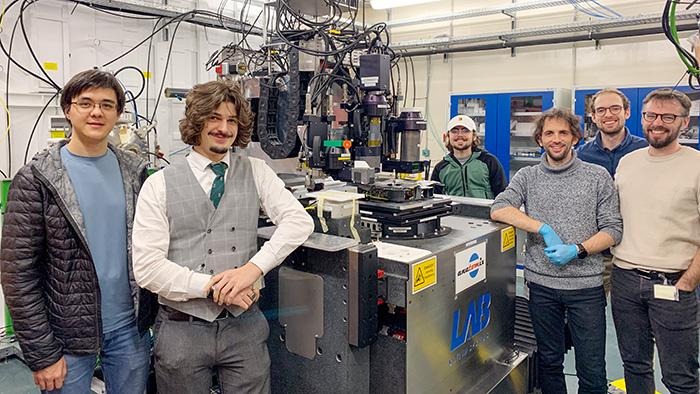Complementing sight, hearing, taste and smell, the sense of touch is discreet but essential. It enables us, for example, to perceive the world around us, manipulate objects with dexterity and even communicate emotions.
To study it, an international team of scientists from EPFL, Sorbonne University, TU Delft, Linköping University and UC Louvain came to the ANATOMIX beamline to test a brand new measuring device.
Long neglected, the sense of touch was honored in 2021 with the award of the Nobel Prize in Medicine to D. Julius and A. Patapoutian, for their discovery of biological receptors capable of transforming skin deformations into neural signals.
Despite these advances, the mechanisms by which skin deforms on contact with different surfaces, whether smooth or textured, remain poorly understood.
What about skin deformation?
This is the issue that the scientists set out to address on the ANATOMIX beamline in December 2024. The measuring device they have designed enables a skin fragment measuring just a few square millimeters to be brought into precise contact with a variety of samples: wood, stone or synthetic materials. The ANATOMIX X-rays then scan the inside of the skin, which is reconstructed in 3D by microtomography (figure 1).

Figure 1: On the left, a device bringing a piece of skin into contact with a plastic material fitted with a 0.5 mm diameter pin. Right: X-ray microtomography of a section of skin in contact with the pin.
The initial results obtained are very promising, and the team plans to continue their explorations during a forthcoming session of experiments on ANATOMIX.

The team (from left to right): Lukas Stracovsky, Matej Mayet, Maxime Rouillard, Thomas Daunizeau, Donatien Doumont, Basil Duvernoy. Absent from photo: Michaël Wiertlewski, Benoit Delhaye and David Gueorguiev.
